So many people who have dogs have told me that their dog can tell when they aren’t feeling well or when they are sad. It is evident when dogs respond to our happy and excited state of mind. They get excited too; sometimes too excited. However, we are sometimes taken back when our dogs come over and just want to be with us when we are sad and not feeling well. Not every dog has that ability. Some get very anxious when their pet parent isn’t feeling well. As Dr. Jennifer Smith pointed out in the previous episode about the 5 pillars of intelligence in dogs, empathy is one of the pillars. The dogs who do sense that they can make people feel better are the ones who make great therapy dogs. Even if your dog isn’t certified to be a therapy dog, they can still provide much needed comfort during times of stress.
I am a believer in our own personal energy and how it affects other people and animals. I believe that we all project a certain type of energy without even being aware of it. How many times have you walked into a room full of people and you pick up on a certain energy? The energy I am speaking of can reflect the type of person that we are. If we are an anxious person who worries a lot, the energy this person projects is unsettling. On the contrary, if we are relaxed and easy going, our energy can be calm and confident. Dogs are the same way. Dogs who aren’t anxious or overly excited will project that calming energy that makes us feel good. These are the dogs who can make great therapy dogs.
Therapy dog training was not a class that was offered when I worked at Petco. I was not trained in training dogs to be therapy or service dogs. I really didn’t know much about it, except that it existed. However, when I met one of my guests in 2012, Coleen Monroe, early on in my Petco career, while conducting obedience classes, I had a feeling that her young dog, Teddy, had the energy it takes to be a great therapy dog. I loved his energy and he wanted to be with me. He would let me pet him until I had to tend to my other responsibilities in the store. He wasn’t demanding of my attention. He was becoming a well trained dog and Coleen was developing such a strong bond with him. I also met Coleen’s family and Teddy was happy and well behaved with all of them.
I knew things could change because Teddy was a young dog when I started working with them. When dogs mature and when the pet parents are not providing the rules, boundaries, and leadership a dog needs, it can change a dog. As Coleen says in our discussion, she was very determined to have a well trained dog. She had two daughters who brought a lot of friends over to the house, and she wanted her dog to behave appropriately.
I put the bug in her ear that I thought Teddy would make a good therapy dog. This motivated Coleen to have more than just a well trained dog. She started doing some research to find a pet therapy program which was right for her and Teddy. What sealed the deal for her was when she was visiting her Mom in the same hospital where she ended up volunteering, someone brought in a therapy dog. When Coleen saw the whole room light up when the dog came in, she decided that’s what she wanted to do.
My other guest, Lisa Bolognia and her Golden Retriever, Josie, also found me at Petco and signed up for classes in 2015. I got the same feeling again with Josie as I did with Teddy. At that point, I had trained hundreds of dogs, and felt that I knew what it took for a dog to become a good therapy dog. Josie had it! She just exuded love and wanted to share it. And who doesn’t love a well trained Golden Retriever?
Lisa was very motivated, just as Coleen was, to have a well trained dog . Lisa’s Mom was wheelchair bound due to a surgery gone wrong. She did not want her puppy to become a dog that was obnoxiously jumping around her Mom. Josie needed to understand the boundaries and space required by a person in a wheelchair, as well as being trained in all her basic obedience skills. When I suggested to Lisa that Josie would make a great therapy dog, Lisa wasn’t even sure what that was. I arranged for Lisa to meet Coleen. By that time, Coleen and Teddy had passed the therapy test with Pet Partners and were already sharing their love at the hospital. She put Lisa in touch with the coordinator at the time to see what was involved. That was the beginning of Lisa and Josie’s 10 year stint as a therapy dog team at Fairview Hospital.
As far as I was involved in this process, I wanted to train more dogs to become therapy dogs. Dogs thrive on having jobs to do. Therapy dogs help people in countless ways, and likewise, the therapy work is wonderful for the dog. I was able to tell clients more about the process and help them prepare for the test. I went to the testing site to observe the test as it was taking place. I felt that I could prepare my clients better by knowing all of the steps required to pass.
In the picture below is another client, Peg Mondozzi and her Belgian Tervuren, Dralion, who passed the therapy test with flying colors. Peg stayed in the program for two years until she got involved in the show arena with Dralion.
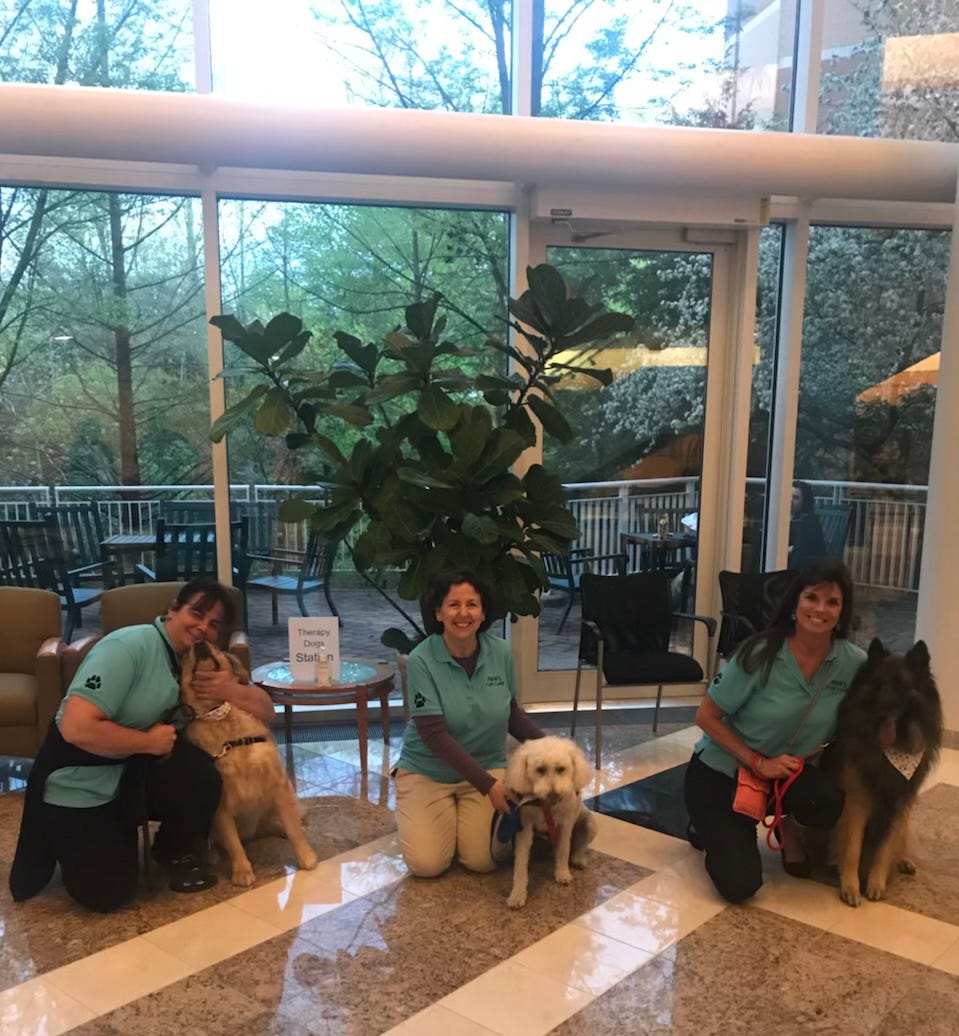
If you are thinking about your dog becoming a therapy dog, you need to be aware that it’s a lot of work besides attending obedience classes. The three teams above all completed basic obedience, advanced obedience, AKC Canine Good Citizen, and therapy dog training classes. I recommend these classes to my clients who wish to pursue this path. Sometimes the puppies start so young that they breeze through the 6 week classes. I recommend repeating a class or two, just for the sake of keeping those skills fresh. Practice makes perfect!
It is also imperative to socialize your dog a lot. This involves bringing your dog with you to as many dog friendly places as possible. The best time to start socializing is after the puppy has been immunized and approved by your vet to be exposed to people, places, and dogs. Socializing involves conditioning your dog to get used to all different types of people, sounds, smells, and other dogs.
Imagine the hustle and bustle of a hospital environment with all the noises, people shouting, and gurneys passing by. For the dogs who pass the test, there will always be a first time for the dog to experience these stimuli. There really is no way of knowing how your dog will respond to this because only therapy dogs are allowed to go in to hospitals. However, if you socialize your dog in stores where there is a lot of activity and noises on the intercom, they shouldn’t have a major issue.
If your dog passes the therapy test and does react negatively to the stimuli in the hospital, there are other places connected with Fairview Hospital to frequent as a therapy dog. One of my clients and her dog who recently passed the test found out that her dog did not react well with the stretchers passing by, especially with an entourage of people surrounding it. She was also nervous around the large food and laundry carts. The solution for this team was to frequent the Moll Cancer Center of Fairview Hospital. They provide much needed emotional support to all of the people in the waiting room.
Socializing also involves establishing rules while out in public. No one likes to greet a dog who jumps, nips or licks them. This is covered in my obedience classes. It is very important. All of these manners require training by qualified professional dog trainers in order to ensure that the dog behaves well while they are out and about in public.
It is not imperative to pass the AKC Canine Good Citizen test in order to qualify for the Pet Partners test, but it is highly recommended. The Canine Good Citizen test is a 10 step test. Nine of these steps are also on the Pet Partners test. The one step that is on the Canine Good Citizen test but not on the therapy test is the dog being separated and out of site from his handler for 3 minutes. If your dog whines, paces, or barks while being tested for this step, the dog and handler will fail. This can be a deal breaker. This indicates that the dog has separation anxiety. Don’t worry if you don’t pass the first time. It is possible to retest at any time with a qualified evaluator.
The other two steps that occasionally cause the dog and handler to fail are greeting other people without jumping, and doing a pass with a neutral dog without reacting. These are also typically the two steps that teams fail on the Pet Partners test. To find out more about the Canine Good Citizen test, please contact either me at the number below or access the American Kennel Club at www.akc.org.
In my opinion, one of the most important things that isn’t on either test is the relationship between the dog and the handler. As a dog trainer, I am always teaching my clients to solicit a look up to them from the dog. You want the dog to “check in” with their handler. You have to know when your dog is getting stressed or has reached their limit while being out in public. Lisa describes in our discussion how Josie looks up to her for guidance as if to ask what’s next. Dogs live in the moment but they also want to know what’s next. It is up to the handler to communicate that effectively. The handler should be able to interrupt the dog at anytime by this signal or command to look at them. As Coleen mentions in our discussion, the testing isn’t just an evaluation of the dog. It’s a team test and a team evaluation.
Both Lisa and Coleen notice that their dogs are excited about being at the hospital. They know they have a job to do. Dogs love to have a job and making people happy. However, jobs can be exhausting. Lisa says that after making the rounds, which is typically after a half hour, Josie may lay down, start panting, or Lisa just sees that Josie’s eyes look tired. Coleen noticed the same signs in Teddy and was always aware to not push him to the point of exhaustion. You want to keep the dog motivated to want to come again for future visits.
Be your dog’s best advocate. Be proactive, not reactive.
Pet Partners sets up testing dates at least twice a year. It is common not to pass the first time. Coleen found that out when the evaluator went to hug Teddy and he backed up. That disqualified him from passing the test. After practicing the hug with friends and family members and having Teddy sit while being hugged, Teddy and Coleen passed on their second attempt. They stayed in the program for 7 years until Teddy passed away from cancer. They loved making people happy at the hospital by either visiting patients in their rooms, hanging out in the lobby, or mingling with doctors and nurses. Coleen also took Teddy to a high school during exam week as a stress reliever for the students. There are so many places to do therapy work. Simply contact the administration of the business or school you would like to visit.
Lisa and Josie passed the test their first time. Josie was one of the youngest dogs to pass. They have enjoyed their time as a therapy team for the past 10 years visiting patients in the pediatric wing, the pediatric ER, and the high risk pregnancy wing. They typically go in the evenings when there aren’t as many people around and Lisa is done for the day from the demands of her full time job. Lisa finds that Josie’s presence makes the the patients talk about the dogs that they have or had, and it takes the focus off of what they are experiencing while being in the hospital. Sometimes, they just hang out in the lobby and people come up and want to pet Josie. So many people are surprised that dogs are even allowed in a hospital, and love to greet Josie. There are times when patients aren’t feeling well and don’t care for a visit, but the staff is always ready and willing to get a few pets in with Josie.
There are several therapy dog organizations available. I am most familiar with the Pet Partners program. Here in Cleveland, Pet Partners is associated with Fairview Park Hospital. They ask their teams to frequent the hospital twice a month. However, once you pass their program, you are able to qualify for therapy work in hospice care, schools, libraries and nursing homes to name a few. There are also dog trainers who have their own therapy program and testing. Chuck Stella, owner of Elite K911, and Gary Flynn who has been a guest on my show, have their own therapy programs.
Coleen is now the Caring Canines Program Coordinator for Fairview Hospital. She took over this responsibility two years ago. Coleen will help those interested in the program by advising them on training, required paperwork and online registration, and then mentoring the team after they pass the therapy test. Coleen then accompanies the team as they walk through the hospital and visit with patients to make sure they know the proper protocol. When the last stage is complete, then the team is on their own and can visit whenever it is permitted. Caring Canines recognizes other therapy dog organizations so that if you pass another organization’s therapy test, you may be eligible to do therapy work at Fairview Hospital under the care of Coleen and Caring Canines. Coleen’s contact info is below.
Coleen is developing some new opportunities for her 24 volunteers. One of the programs is Caring Canines on Call. Patients can now request a visit by a therapy dog. Coleen will send out an email to all of the volunteers and whoever can grant the patient’s request will pay a visit with their dog. There are also events at the hospital like Nurses Week and Pharmacy Week where the therapy dogs mingle with the staff and patients.
Therapy work can be so fulfilling and gratifying to know that all of your hard work in training your dog has paid off. Not every dog is a therapy dog candidate. However, when you do have that special dog who inherently knows that their presence creates so much happiness, there’s nothing like it when you witness it. Love isn’t just a one way street. Dogs feel it too, and when you experience this, it touches you emotionally and deeply in such a unique way that words fail to describe it.





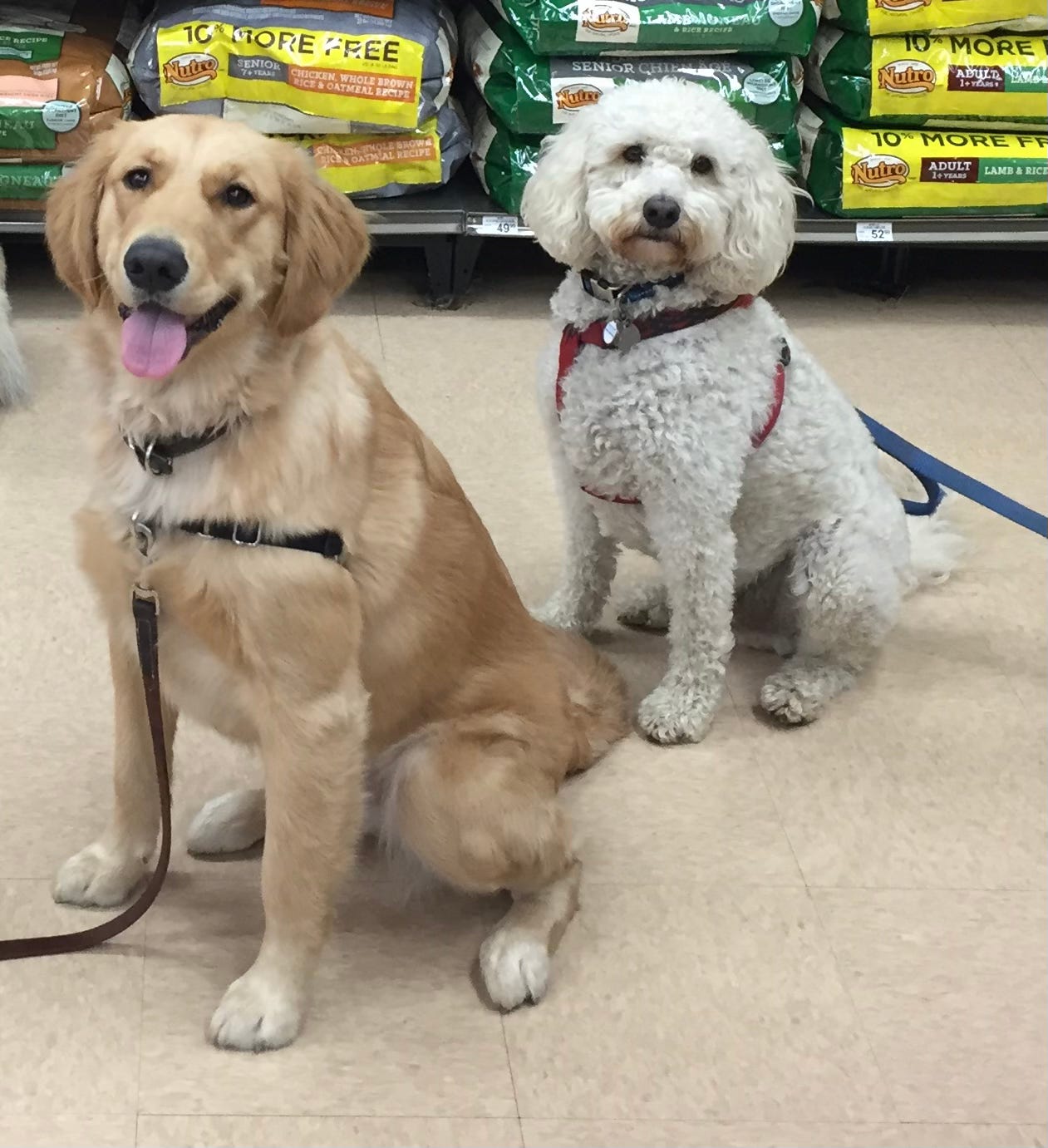
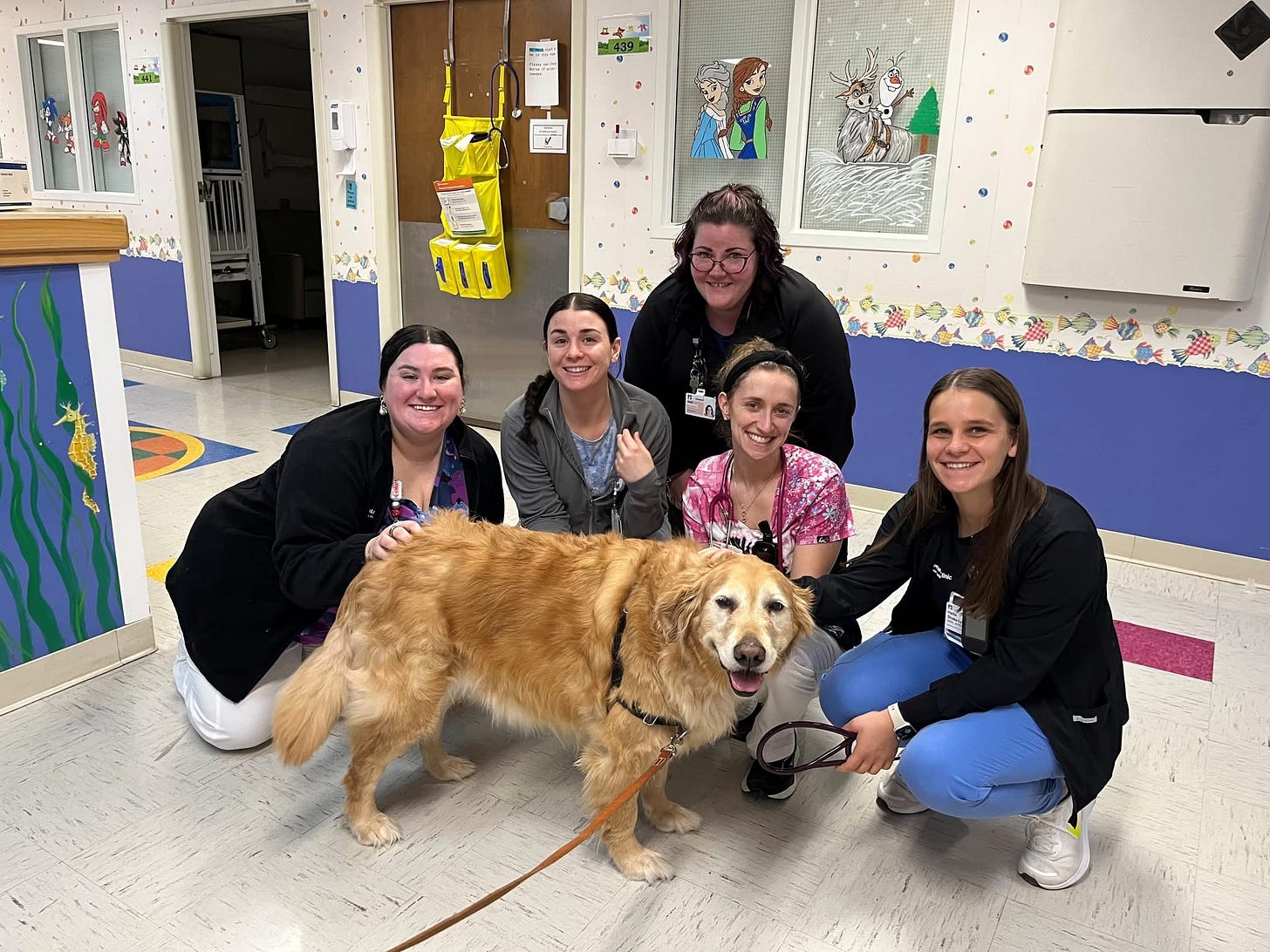
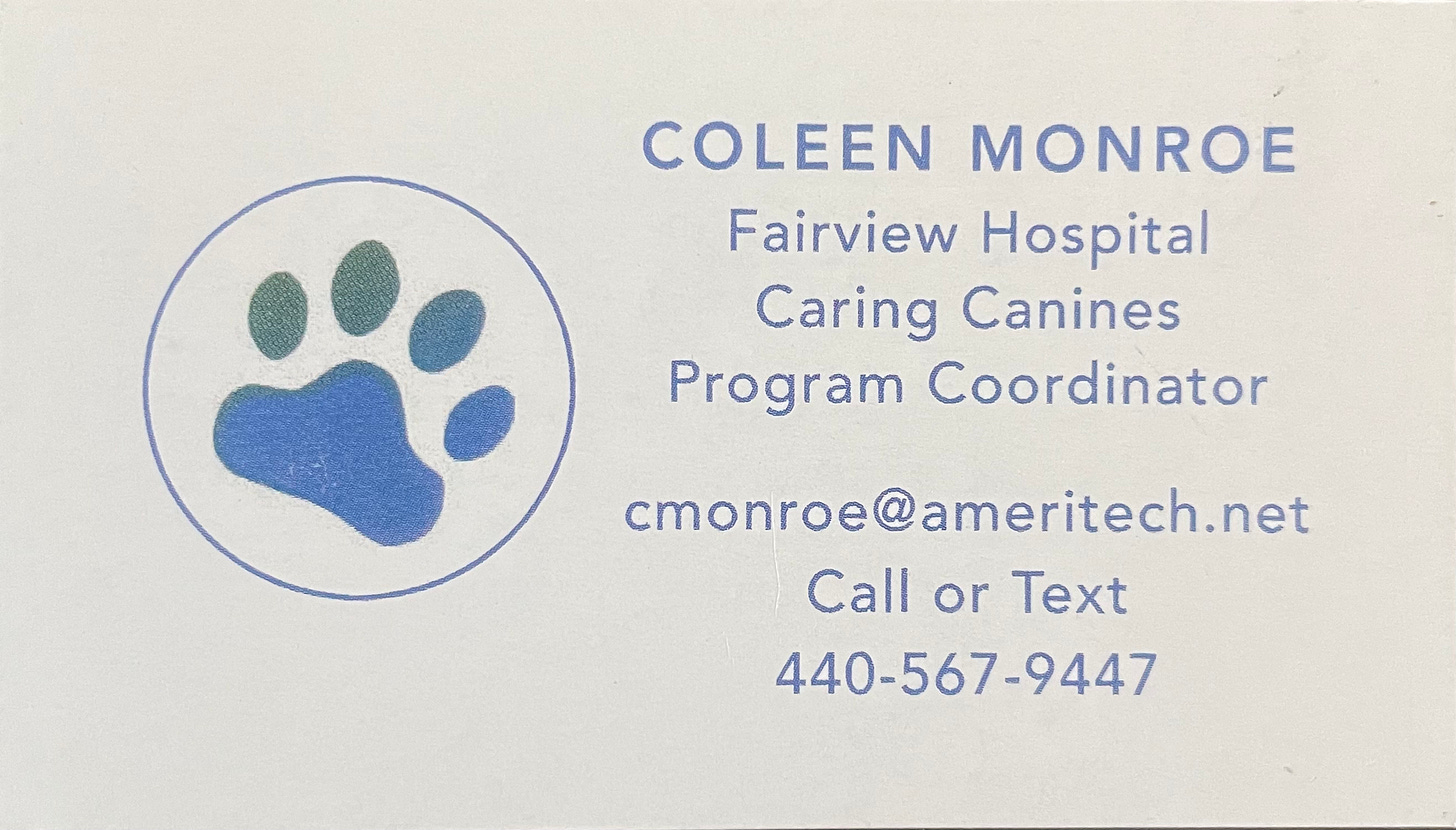


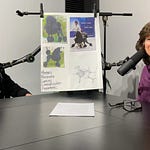

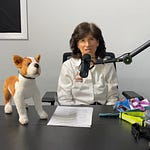




Share this post